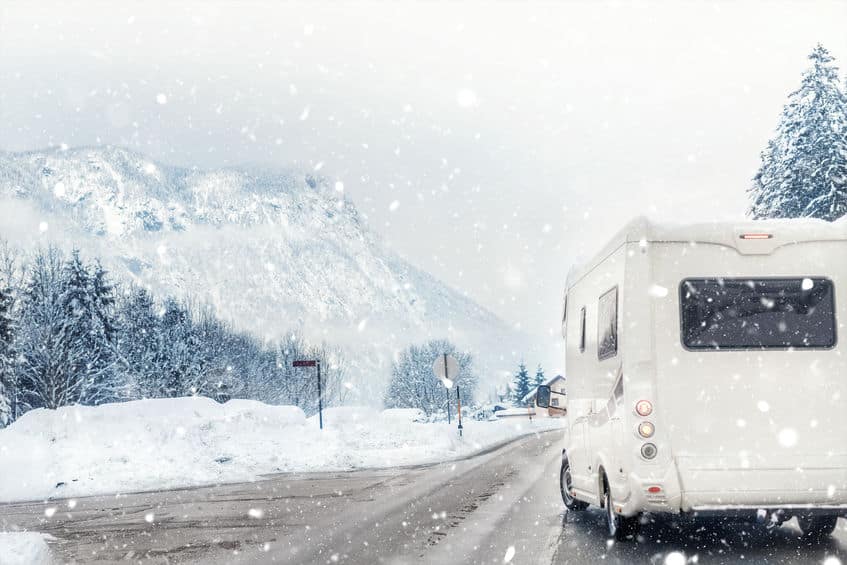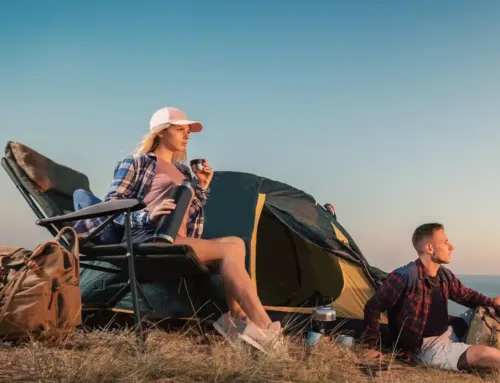We have become conditioned to believe that camping adventure should be limited to the warmer months. However, they can also be a fun winter activity for your friends and family. You can still make some of the most memorable camping adventures in sub-five-degree weather. Also perfectly warm camping weather in New England is a very window of time. Don’t spend most of the year waiting for those few months of “camping season” take advantage of camping all year round.
Jus like rain, the cold can quickly ruin a trip fast if you are not properly prepared. We have compiled a few simple steps to ensure that your family experiences camping bliss during the winter.
Is a tent, swag or trailer best for winter camping?
We are saturated with so many different options when it comes how your will lodge while camping. With so many choices available it can be very confusing to decide which one makes a good all-year-round shelter, so we have provided a breakdown of the options you have.
1. Swags vs tents
Using canvas swags for ground-based shelter during the winter tend be less susceptible to the cold and wind compared to tents. While you are likely to find an array of excellent alpine style tents for mountaineers, there is an advantage to using swags. For the average family these are a great option as the canvas retains the heat you generate naturally.
Swags, in general, are not as tall as tents, allowing the warm air to stay close to you. They also usually come with a 50-70 mm mattresses that makes them very comfortable. Swags offer you comfort, and more warmth over a tall tent.
2. Soft floor trailers:
Camper trailers are also a great option when it comes to camping all year round. You will be able to stay in an elevated bed and won’t have to feel the cold ground. This option also offer your families a place to store all of your gear. There are typically two main types of camper trailers, the first option is a soft floor trailer. These often offer more open space with a drop-down PVC floor.
So if you are camping with a big family or group, then these are a popular choice because they allow bunk and camp bed setups. You will need to be cautious of where you are parking and what the outside area is like. You will want to be aware of any exposed rock that can put a hole in the floor. Using groundsheets or those clip-together mats can help to resolve these kinds of scenarios.
3. Rear fold or forward fold hard floor trailers
The second option, when it comes to camper trailers, is the rear fold or forward fold hard floor trailer. Hard floors are often quick to set up and the risk of rocky/difficult grounds is no longer an issue. There is still a downfall as these trailers tend to not be very spacious. While you will still be able to set up a double bunk for two young children inside, there is definitely less space to walk around.
Forward folds are proving to be the new hot item for families or big groups because they also offer an internal dining area with little table to eat at too.
Tip: bringing a measured piece of carpet with you can enhance the camper trailer luxury experience tenfold in all models and can easily be stored on top of the bed when packed away.
What to consider if you are having a campfire:
If you ask any winter camping enthusiasts, they will tell you that this is a must-have for your campsite. This is typically a camping staple no matter the temperature outside, but is especially important during the winter months. In order to have a fire, you must always consider the following things before you leave for the trip:
1. The venue you’re camping at
Make sure you are doing proper research of the campsite before you go. The location you decide to camp out will dictate whether you can have a fire or not. Check to ensure that the venue allows fires, and if they do, also find out if you can collect wood or otherwise you’ll have to bring your own. At Acorn Acres no firewood is to be brought onto the campground property from outside at any time.
Keep in mind that National parks tend to be less flexible. But, if you have a dry stash of wood at home that you can bring, it won’t be a problem.
2. Bringing the right equipment to collect wood
If you are able to collect wood at the site then bringing the proper tools is pivotal. For example even though using a handsaw will work it can become very tiresome. Using something like a chainsaws will always make light work of wood collection. You should keep in mind that National parks don’t allow chainsaw use due to noise considerations. However, the new battery-powered brushless saws can be a great option.
Just to be safe, check with the ranger on your options before your trip. Ensure you bring lighters and even Firelighters as well, in case the wood is a bit wet. It is always best to check ahead of time so you aren’t bringing equipment you can’t use, or forgetting valuable equipment needed.
3. The environment and weather conditions
You should always look at how the weather has been leading up to your trip and the area itself. This is important because lets say the area has been raining for two weeks straight prior to the trip. Then it is safe to assume that the wood local to the area probably won’t burn well.
Tip: Often a campsite has a predetermined fireplace and opportunity to place your tent where you like. Try starting the fire first to track the direction of the smoke and then set up your accommodation out of the way. No one wants to the have campfire smoke blowing straight into their tent.
How to keep warm in winter?
You will want to take into account what clothes, shoes and sleeping gear you are bringing. Once the winter cold starts to seeps in it can be very hard to get warm again. Here are some things to consideration that can make all the difference, especially if it’s your first time going away in winter.
What clothes should I wear for winter camping?
If the wind is a factor, then windproof jackets and pants will help immensely. Even lightweight wet weather coats over sweaters can cut the breeze from getting to you. Naturally sweaters and tracksuit pants along with thermals are all good choices to wear. You might consider carrying a bag with extra jackets and pants you never know how the weather will turn or what the conditions are really like. When it comes to your warmth and comfort there is not such thing as too many layers of options.
Tip: Ugg boots actually make a great around-the-campsite shoe. The hard sole and a fleecy inner make for the ultimate campsite comfort.
Activities to keep warm:
Staying warm is essential to your fun and enjoyment during your trip. And nothing keeps you warmer in the winter than a little bit of exercise. You should obviously dress to match the environment but here are some campsite activities to consider:
1. Exploring the Area
Nothing gets the blood pumping than a good walk around the area to enjoy and learn about the local area where you are staying. Even areas you might have previously camped in several times always have something new to discover. If you are new to the campsite this will also act as way to get to know the area you are staying in.
2. Splitting Wood
Splitting wood is a useful campsite activity that can help keep the adults warm. Bring along a block splitter and get more out of your wood. One hour of this and you will feel plenty warm, just keep safety in mind and make sure the kids are out of the way.




